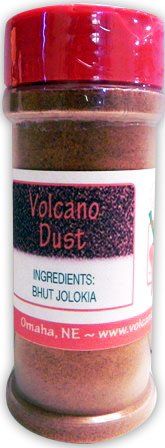[Most Recent Entries] [Calendar View] [Friends View]
Monday, April 1st, 2013
| Time | Event |
| 5:50a | The Case of Charles Dexter Ward: HP Lovecraft, much improved in graphic form. The dirty secret of the Cthulhu mythos is that their originator, HP Lovecraft, wasn't a very good writer. In addition to his unfortunate tendency to embrace his era's backwards ideas about race and gender, Lovecraft was also fond of elaborate, tedious description that obscured the action and dialog. Which is a pity, because Lovecraft did have one of the great dark imaginations of literature, a positive gift for conjuring up the most unspeakable, unnameable (and often unpronounceable) horrors of the genre, so much so that they persist to this day. Enter INJ Culbard, whose work adapting various Sherlock Holmes stories into graphic novels for Self-Made Hero press I've reviewed here in the past. Culbard is a fine storyteller and artist, and makes truly excellent use of the medium to deliver a streamlined Lovecraft, one where the protracted, over-elaborated descriptions are converted to dark, angular drawings that manage to capture all the spookiness, without the dreariness. This is really the best way to enjoy Lovecraft. The Case of Charles Dexter Ward
|
| 6:28a | Online journalism consumers are "looters" Noted crankypants Bob Garfield, co-host of On The Media, likens current consumers of (mostly free, readily-shared) online news to "looters" who "enjoy an improved standard of living." Writing in a Guardian op-ed section ironically titled "Comment is Free," Garfield says that standard of living "only stays improved until the store is emptied out."
Those consumers cheerfully using the web to sample content from all over the world via news websites, blogs and aggregators are essentially picking the inventory clean. Oh, and when they get the stuff home, the goods aren't what they used to be. And some of the stuff has a sour smell to it. tl;dr anyone who cares about journalism should "pray for paywalls and other subscription models to take hold." Go read the rest. Apparently it's not an April Fool's joke, but a sincere rant. * You just got excerpted and aggregated, bro. |
| 6:44a | Rocket scientist who also made "a mean beef stroganoff" inspires debate on how to write about lady-s  Rocket scientist Yvonne Brill honored by President Obama. (Courtesy of Ryan K. Morris/National Science & Technology Medals Foundation) Yvonne Brill, a Canadian rocket scientist who developed jet propulsion technologies, died recently at 88, after a long career propelling human beings toward the stars. The New York Times obituary by Douglas Martin began with a quote about her cooking and mothering skills: “She made a mean beef stroganoff, followed her husband from job to job and took eight years off from work to raise three children. ‘The world’s best mom,’ her son Matthew said.” Brill developed the concept for a new rocket engine, the hydrazine resistojet, but the paper of record starts off with her beef noodle skils. It's a sweet comment from her grieving son, yes; but obituaries of prominent male scientists don't open like that. And obituaries of prominent women in historically male-dominated professional fields very often do. After much public outcry—Douglas Martin must be punished!—the Times edited the lede to omit the stroganoff. Vegans and feminazis rejoiced. I kid, I kid. But seriously, the internet-drama over the NYT's crappy Brill obit leads us to something valuable: a discussion around how to write about female scientists. Ladies and non-ladies, in the spirit of the Bechdel test, from Christie Aschwanden writing at doublexscience: the Finkbeiner test.
To pass the Finkbeiner test, the story cannot mention Read the rest. Great stuff. Required reading if your name's Douglas Martin, and you're writing about Scientistesses. |
| 6:53a | April Fools now big business "The April Fool is dead," writes Alastair Macdonald. "Or at least the gentle jester of the common folk has metastised into a corporate colossus controlled by global marketing executives, bestriding the Internet to force familiar brands ever deeper into the collective consciousness." |
| 7:00a | Dinner’s Revenge: mealworms that survive in the stomach, then eat their way out of predators Photo: Gilles San Martin (cc) Can the eaten eat back? The darkling beetle, small and shy with an understated matte-black carapace, is better known as its adolescent self, the mealworm. Mealworms and their darkling cousins the superworms are popular “live feeders”—food for pet reptiles and amphibians that won’t eat prey that’s already dead. For years, a disconcerting rumor has bounced around the “herp” (as in, herpetofauna) community. Heed the words of Fishguy2727, posting on Aquaticcommunity.com: “I have talked to a number of people who have FIRST-HAND watched with their own eyes as the animal ate a mealworm ... and within ten to twenty seconds the mealworm is chewing out of the animal’s stomach.” I heard about the phenomenon SECOND-HAND from wildlife biologist Tom Pitchford. The mealworm came to mind when I asked Tom whether he knew of any nonparasitic creature that could survive in a stomach for any length of time. He had heard that some online herp forums recommend crushing mealworms’ heads prior to serving. “While the insect is in its death throes, the lizard will come over and eat it.” Mealworm ranchers scoff. “This is an old wives tale,” says Wormman.com. The owner of Bassetts Cricket (and mealworm) Ranch told me that a slice of carrot, for a mealworm, is a two-day project. “They can’t eat out,” he said. (Though obviously enough people worry about it that it has its own verb form.) But mealworm sellers have a financial stake in the matter. What do reptile and amphibian dealers say? Carlos Haslam, manager of the East Bay Vivarium, a reptile and amphibian store not far from my home, told me that in his forty years in the business, he has not seen the phenomenon nor heard a customer report it happening. He pointed out that lizards chew their food before swallowing. Frogs don’t, but lizards do. And most of the stories are about lizards. Fishguy2727 takes no comfort. “Just because 1,000 people have not had it happen to them does not mean it is impossible. There is no doubt that this can happen.” As so often is the case with apocryphal tales like this, finding someone who knows someone who’s seen it is easy. Less easy is tracking down an actual eyewitness. One who claims to have seen is John Gray, the animal care technician at the Tracy Laboratory at the University of Nevada, Reno. His boss, Richard Tracy, is a physiological ecologist. He predicts hotspots of future extinction, with reptiles and amphibians as his focus. Eighteen lizards, forty toads, and fifty frogs are under John Gray’s care, but he has not seen it happen to any of them. It happened to a fence lizard he caught in his backyard as a twelve-year-old. He recalls feeding a superworm to his new pet in the evening, and finding the lizard dead the next morning with the superworm “hanging out of its side.” Tracy is skeptical. He has a theory that the story took root in the public’s consciousness with the 1979 release of Alien, a film in which the title character hatches inside one of the crew and breaks through the skin of the man’s abdomen during a meeting. He questions Gray’s memory. Who can recall, with dependable accuracy, the details of an event that happened thirty years ago? One of the mealworm’s natural behaviors is to crawl underneath things. “Mealworms prefer darkness and to have their body in contact with an object,” says the University of Arizona Darkling Beetle/Mealworm Information sheet, under the heading “Interesting Behaviors.” The sheet’s authors make no mention of mealworms eating their way out of stomachs, which would, you’d think, qualify as interesting behavior. As with the post-laxative stomach slug and snake sightings of yesteryear, it seems more likely that the worm was already on the scene, seeking darkness and framed by happenstance. However, like most people who work with captive reptiles and amphibians, Tracy has trouble completely dismissing the stories. He’s going to do what experimental biologists do in situations like this: experiment. Professor Tracy has borrowed an endoscope. It is slimmer than most because it was designed to look up urethras. The scope belonged to a urologist whose daughter studied tortoises at the University of Nevada. He lent it to her to look inside tortoise burrows, and she has lent it to Tracy to watch mealworms inside stomachs. What goes around comes around, and up and in and through. Tracy has no funding for the experiment, just enthusiasm. He calls up colleagues and acquaintances and tells them what he’s fixing to do, and they jump on board with offers to help. Walt Mandeville, the university veterinarian, has volunteered to do the sedating. Tracy’s grad student Lee Lemenager will be manning the endoscope. Lee has the kind of face that children draw when they first begin to draw faces, everything round and benign. Earlier in the day when he dripped gastric acid on a superworm, it seemed like a friendly thing to do. “And this is Frank and Terry, from OMED,” says Tracy as two more men show up in the lab. OMED of Nevada sells used medical equipment. “They lent us tens of thousands of dollars of video equipment that is forty years old and probably worthless. Welcome!” Tracy is one of those supremely likable professors whom students keep in touch with long after graduation. The back wall of the Tracy Laboratory is covered with photographic portraits he has taken of his grad students. His white hair suggests he may be closing in on retirement, but it is difficult to imagine him golfing or watching daytime television. Tracy holds a bullfrog in sitting position while Lee feeds the scope into its mouth and down to the stomach. We aim to spy on a superworm swallowed less than two minutes ago. The endoscope, which is a flexible tube of fiber optics with a tiny camera and light at the end, is hooked up to a closed-circuit video monitor so that everyone can watch, and Tracy can film, what’s happening inside the stomach. The frog is sedated but awake. It glows like a decorative table lamp, the kind that sets a mood but is not sufficient to read by. The screen on the monitor is solid pink: the view from inside a well-lit frog stomach. You don’t expect any part of a frog to be pink, but there it is, pink as Pepto-Bismol. And then suddenly: brown. “There he is!” Lee focuses down on telltale bands of brown, tan, and black. The superworm is not moving. To see whether it’s even alive, Walt the veterinarian inserts a pair of biopsy forceps through the makeshift speculum that Lee slid down the frog’s esophagus at the beginning of the experiment. The jaws of the forceps gently squeeze the superworm’s midsection. It squirms, electing a spontaneous Broadway chorus: “It’s alive!” “Is it chewing?” someone asks. As if by director’s cue, all heads lean in. “That’s the tail,” says Walt the vet. Walt has a keen observational eye, honed by a span of years as a poultry inspector (“4.8 seconds per bird”). Lee pulls back on the endoscope and works it over to the other end. The superworm’s mouthparts are still. Nothing is moving. Walt tells us about a phenomenon he calls the “blanket effect.” To calm a wild horse prior to treating it, a vet may herd the animal into a narrow chute lined with packing peanuts that gently presses in on its sides. It is the same principle behind swaddling an infant or hugging a distraught friend or dressing a thunder-phobic dog in an elasticized Thundershirt, available in pink, navy, and heather gray. Mercifully, stomach walls seem to act as a mealworm Thundershirt. Before the superworm was presented to the frog, Lee looped a thread around its middle and secured it with surgical glue, so he could retrieve it later. Now that time has come. The frog surrenders its lunch seemingly without concern, and the superworm is left in a petri dish to recover. John Gray goes to get a chuckwalla, placing the superworm back behind the lizard’s teeth. Same result. The superworm quickly goes still but does not die. One thing is clear from these experiments. Mealworms are not much troubled by gastric—that is, hydrochloric—acid. Many people, including myself when I began this book, think of hydrochloric acid more or less the way they think of sulfuric acid, the acid of batteries and drain cleaners and hateful men who wish to scar women’s faces. Sulfur likes to bind with proteins, radically altering their structure. If that structure is your skin, you come away from the experience disastrously altered. Hydrochloric acid isn’t as caustic. For me the confusion can be traced to the movie Anaconda, the scene in which the giant snake rises from the water to regurgitate Jon Voight’s character, his face melted like wax. Some time back, I visited the lab of my favorite snake digestion expert Stephen Secor, the technical consultant on Anaconda. I told him I wanted to experience gastric acid, to get a sense of what it might feel like to be alive inside a stomach. He made me promise not to tell his wife, who oversees safety protocol for the university’s labs, and then he took a bottle of hydrochloric acid off a shelf and put a dab—five microliters—on my wrist. I braced for sharp heat, as from a drop of scalding water. It was a full minute before I felt anything at all, and then only a weak itch. He added another drop. At three minutes, the itch turned to mild irritation, which held more or less steady for twenty minutes, then faded to nothing. It left no mark. But stomachs secrete more than a single drop of hydrochloric acid. And they keep on secreting, readjusting the pH as the digesting food buffers the acid. My guess is that the situation inside an actively secreting stomach lies somewhere between what occurred on my wrist and what happened to the Japanese factory worker who fell into a tank of hydrochloric acid seven feet deep. The case report states that his skin turned brown and the delicate tissue of his lungs and digestive organs underwent “dry coagulation necrosis.” Burning—whether from acid or from heat—denatures proteins. It changes their structure. It is denaturing that solidifies the boiling egg, that curdles milk, that distorts the burn victim’s skin. Inside a stomach, hydrochloric acid denatures edible proteins, making them easier for digestive enzymes to break down. The effects of gastric acid are insidious but far from instantaneous, especially if the eaten entity is, like a superworm, protected by an exoskeleton. Crabs vomited after three hours in the stomach of the Asian crab-eating snake Fordonia leucobalia have been known to stand up and run away. I have an eyewitness for this: University of Cincinnati biologist Bruce Jayne. Jayne had “gently massaged” the snakes’ bellies to get them to surrender what they’d eaten, so he could tally it for his research. Because you can’t just ask them. But without Bruce Jayne to massage the belly, without Lee Lemenager to pull the surgical thread, without God making the whale regurgitate, there would seem to be no way out. Parasites are the exception. “Parasites bore all over the place,” says Professor Tracy. Some are equipped with a boring tooth, like a drill bit installed on the top of the head. “That’s what they’ve evolved to do. But these are mealworms, for crying out loud.” Larvae burrow, but they don’t bore. “How the hell would they know to tunnel out?” Walt the vet agrees. He is off and running with a story about the giant kidney worm, a parasite that bores out the entire organ and then exits the body through the urethra. He jerks his elbow toward the endoscope. “You could watch it coming with that scope.” Tracy is going to give the superworms one last chance, the best possible chance, to see if they can chew their way to freedom. They will be put inside a dead stomach—one with no secretions and no muscle contractions. Where do you find a stomach on a Thursday afternoon in Reno? “Chinatown?” suggests someone. “Costco?” “Butcher Boys.” Tracy pulls his phone from a pocket. “Hello, I’m from the university”—the catchall preamble for unorthodox inquiries. “I’m wondering, is there any chance at all we could get a fish stomach from you?” Tracy waits while the man goes to ask someone and/or make twirling finger motions at his temple for the benefit of his coworkers. The lab falls quiet. The feeder crickets chirp in the next room. “No stomachs of anything? No. Okay.” John Gray lifts his head and says, in his quiet way, “I’ve got a dead leopard frog in the freezer.” Everyone takes a break while Gray goes to defrost his frog under a warm tap. Walt entertains us with talk of an alternative-medicine experiment going on at the medical school—healers practicing Reiki on mice. Tracy walks next door to get a toad to show me, a new species he discovered doing fieldwork in Argentina. He returns with it in a glass dish, cradled against his belly. He looks like a kid standing in the kitchen with his cereal bowl. It’s a nice toad, less warty than some. I tell him this, and he seems pleased. “You could be the first person to like this species.” Second, I’m pretty sure. “You could be the last too,” says Lee, more of a frog guy. Gray rejoins the group with the defrosted leopard frog, now pinned in a dissecting tray. Lee snips up the midline of the belly and peels back the flaps of skin as if they were stage curtains. Professor Tracy slides a superworm into the stomach. The 1925 essay “The Psychology of Animals Swallowed Alive” opens with the author sitting “in quiet contemplation digesting after dinner” and wondering whether animals that swallow their prey live1 are “worried by the acrobatic effects of victims trying to escape.” If this leopard frog were alive, if frogs have the neurological wherewithal to worry, then the answer must be yes, they sometimes worry. The mealworm, with obvious worries of its own, animates the frog stomach like a sock puppet, arcing and straightening and squirming in the snug pink sac for fifty-five seconds. Then it stops completely. “Blanket effect,” says someone. The superworm is extracted and set aside. Like the others, it is motionless but not dead. And as with all the earlier entrées, this one will wake up after half an hour or so outside the stomach and appear to be fully recovered. A second worm is left in place overnight, to rule out the possibility that superworms can shrug off the blanket effect and resume their efforts to escape. It is dead by morning. “There is no way in my mind that they can eat their way out of stomachs,” states Tracy. Walt is not as sure. He was impressed by the vigor of the superworm’s struggle. “What if there were a weak spot in the stomach?” Might it be possible to escape a stomach by rupturing it with an especially forceful squirm? That appears to be what was depicted in a photograph that went viral in 2005, of a dead python in a Florida swamp with the tail and hind legs of an alligator sticking out of its side. “That’s what everyone was saying: that the alligator kicked its way out,” Stephen Secor told me. Secor had been flown out to the scene by a National Geographic television production team, who had hired him as an on-camera expert for a one-hour special spawned by the chimerical remains. Secor knew before he arrived that the dinner-kicking-its-way-out scenario was extremely unlikely. Pythons kill their prey before eating it. 2 “And there’s no way stuff can move once it’s inside there.” There was in fact a weak spot. Secor pointed to a printout of the photograph I’d brought with me when I visited his lab in late 2010. Two-thirds of the way down the python’s exterior is a patch of black (dead) tissue—a poorly healed wound from some earlier incident. The rupture of this wound, Secor thinks, was caused by an alligator, let’s call him alligator B, who attacked the python while he was digesting alligator A. The python broke open at the poorly healed wound, and A popped out. So it wasn’t, at the end of the day, a case of dinner exacting revenge from within. Just another dog-eat-dog day in the Everglades. The other theory Stephen Secor debunked for the National Geographic program was that the alligator dinner was so enormous the python simply burst. “That,” he said, pointing to the meal in the famous photograph, “is nothing.” The python is built to accommodate prey many times wider and bulkier than itself. The esophagus is a thin, pink stretchable membrane, a biological bubble gum. Secor went over to his computer and pulled up a slide of a python engulfing the head, neck, and shoulders of an adult kangaroo. This was followed by a shot of a python with three-quarters of a gazelle “down in,” with only the hips and rear legs remaining al fresco. Pythons use their muscular coils to pull the prey apart, like taffy, so it’s narrower and easier to get down. And they don’t swallow in a single peristaltic wave of muscle contraction, as we do. They do what’s called a “ptergoid walk.” They inch their jaws along on the prey like marines on their bellies, moving forward by the elbows, left, right, left. The other reason Secor could dismiss the bursting-stomach theory is that he knows exactly how much pressure that would take. “We sealed off the cloaca of a dead python and inserted an air line down the esophagus.” Probably much like you at this moment, Secor was “sick of listening to people talk about pythons bursting.” I would give you the citation for his experiment, but Secor did not publish a paper. It was “just a fun thing.” He pointed to my printout of the python-alligator photo. “It was a lot more pressure than could be generated from this.” Biologists have a term for stretchy, accommodating digestive equipment: compliant. You’re planning on taking down an ibex? Yes. No problem. I can handle it. The compliant stomach is a physiological larder, a storage unit for the food that will sustain an animal over the days or weeks when prey are scarce or it’s off its game. It is the stomach of feast-or-famine. “The predator has a very compliant stomach,” says David Metz, a gastroenterologist with the Hospital of the University of Pennsylvania who has studied people who compete in eating contests. “Think of the lion after the big meal, with its huge, distended belly. They can lie in the sun for the next few days, letting it all slowly get digested.” When you occupy the top spot on the food chain, you are free to lounge around with little concern over someone larger and stronger jumping you and eating you. The lion falls prey only to humans, in the form of hunters—and the occasional Mesopotamian vivisectionist. In a 2006 issue of the Lebanese Medical Journal, Farid Haddad details the efforts of Ahmad ibn Aby al’Ash‘ath, a court physician in Iraq circa a.d. 950, to document the compliancy of a lion’s stomach. In his opening paragraph, Dr. Haddad notes that ’ash ‘ath means “disheveled.” It seems an unlikely name for a royal physician, but a brief spin through the man’s writings sheds some light: “When food enters the stomach . . . , its layers get stretched; I observed this in a live lion which I dissected in the presence of Prince Ghadanfar. . . . I proceeded to pour water in the lion’s mouth and continued to pour jug after jug in its throat; and we counted until the stomach filled up with about [5 gallons]. . . . I then cut open the stomach and let the water out; the stomach shrank and I could see the pylorus. God is my witness.” The agriculturally informed reader may be unimpressed by the five-gallon capacity of the lion’s tank. A cow’s rumen—the largest of its four stomach compartments—is the size of a thirty-gallon trash can. Why should this be, when all a ruminant needs to do to get dinner is lower its head and graze? When food carpets the land from hoof to horizon, famine isn’t a concern. So why the massive intake? The answer lies in the relatively low nutritional value of the ruminant diet. It is not merely the size of the cow’s rumen that resembles a garbage can, it is the contents. The first place I visited for this book was the University of California at Davis, where animal science professor Ed DePeters and his colleagues test organic waste by-products to see whether they might make good cattle feed. With the help of a fistulated cow, DePeters has tested the digestibility of almond hulls, pomegranate scrap, lemon pulp, tomato seeds, and cotton seed hulls. He is a modern-day William Beaumont, lowering mesh bags of experimental foods into the rumen, and then pulling them out by a string at intervals to see what remains. The day I visited, they had been testing prune pits from nearby Yuba City, “the prune capital of the world.”3 Cows, by virtue of the plentiful and varied bacteria in their rumen, are able to derive energy from things that would pass through a human undigested. The prune pit has a hard, nutritionally blank hull, but the embryo inside provides protein and fat. Rumen bacteria can break down the hull and free these nutrients, though it takes them a few days. DePeters showed me one of the mesh bags. “Sometimes I put a midterm exam in there,” he said. Cows can’t digest wood pulp. “I tell my students, ‘The cow didn’t digest that material any better than you did.’” “We’ve done cloth from a plant in Petaluma that was making cotton towels. All the small linters that didn’t get into the towels? You can feed ’em. They can break it down. They get energy from it. It’s just slower.” As with hay and grass, it takes a sizable serving of tea towel for a cow to get its RDA—hence the enormous volume of the rumen. DePeters speculates that there’s another reason for the huge capacity of the rumen. Ruminants graze on the open plain, easily visible and vulnerable to predators. “So they’ll go out and graze and take in a lot, then go and hide somewhere to ruminate and digest.” The rumen is a built-in to-go box. DePeters took me to visit one of the fistulated cows. Escorted by an entourage of large flies, we made our way through a grid of muddy corrals. I was in kitten heels and a skirt, a fact from which DePeters, in filth-encrusted rubber boots and worn T-shirt, derived lasting merriment. DePeters is tanned and tall, with a wiry build. His hair is the same reflective silver of the screeching aluminum gates. It works well with his eye color, the deep dusty blue of scrub-jay plumage. Cow 101.5 was getting a hose bath from one of DePeters’s students, Ariel. Ariel and her array of piercings posed a welcome challenge to the stereotype of the conservative male ag major. We stood by, watching and waving away flies. I like the look of cows: the art-directed hide, their hips under their skin, the meditative sideways metronomics of the jaw. The fistulated—or “holey,” as the students like to say—cow has been an ag-school standard for decades. My husband Ed recalls, as a child, hearing from his dad about the cow at Rutgers with “a window in its side.” The operation is simple. The bottom of a coffee can is traced with chalk on the cow, a topical anesthetic applied, and the circle cut from the hide, along with a matching opening in the rumen. The two holes are stitched together and the hole is outfitted with a plastic stopper. It is little more barbaric than the earlobe plugs of my local Peet’s barista or Ariel’s facial adornments. “The animal rights people come out here expecting a glass window with a sash and sill,” said DePeters. He handed me a protective plastic veterinary sleeve that extended to my shoulder and directed me to position myself to the side of the opening. When a fistulated cow coughs, if it has been eating, wet plant matter sometimes blows out of the hole. DePeters took some photographs of me with my right arm in 101.5. The cow appears unmoved. I look like I’ve seen God. I was in all the way to my armpit and still could not reach the bottom of the rumen. I could feel strong, steady squeezes and movements, almost more industrial than biological. I felt like I’d stuck my arm into a fermentation vat with an automated mixing paddle at the bottom, and I basically had. Ancient man was omnivorous—a scavenger as much as a predator. Often enough, his steak dinner was shared with millions of potentially harmful bacteria. Thus the human stomach, unlike the ruminant’s, concerns itself with disinfection more than holding capacity. But even scavenged meals were sporadic, and some degree of storage was needed. How compliant is the human stomach? That depends on what you use it for. Endnotes 1 Those of you who swallow oysters without chewing them may be curious as to the fate of your appetizers. Mollusk scientist Steve Geiger surmised that a cleanly shucked oyster could likely survive a matter of minutes inside the stomach. Oysters can “switch over to anaerobic” and get by without oxygen, but the temperature in a stomach is far too warm. I asked Geiger, who works for the Florida Fish and Wildlife Research Institute, about the oyster’s emotional state during its final moments inside a person. He replied that the oyster, from his understanding, is “pretty low on the scale.” While a scallop, by comparison, has eyes and a primitive neural network at its disposal, the adult oyster makes do with a few ganglia. And mercifully, it is likely to go into shock almost immediately because of the low pH of the stomach. Researchers who need to sedate crustaceans use seltzer water because of its low pH. Geiger imagined it would have a similar effect on bivalves. But you might like to chew them nonetheless, because they’re tastier that way. 2 How remains a matter of debate. I had heard that pythons suffocate prey by tightening on its exhale and preventing further inhales. Secor says no; prey passes out too quickly for that to be the explanation. “You’d still have oxygen circulating in the blood, like you’re holding your breath.” He thinks it’s more likely that the constriction shuts off blood flow, more like strangulation than suffocation. An experiment was planned at UCLA but nixed by the animal care committee. Secor would volunteer himself. “I think we’d all like to have a giant snake constrict us in a controlled situation and see what happens—could we still inhale?” It’s possible he’s a little nuts. But in a good way. 3 Excuse me, I mean the Dried Plum Capital of the World. The change was made official in 1988, as part of an effort to liberate the fruit from its reputation as a geriatric stool softener. Yuba City has Vancouver, Washington, to blame for that. The original Prune Capital of the World, Vancouver was the home of the Prunarians, a group of civic-minded prune boosters who, back in the 1920s, touted the laxative effects of dried plums. The Prunarians also sponsored an annual prune festival and parade. A 1919 photo reveals a distinct lack of festiveness and pruniness. Eight men in beige uniforms stand in a row across the width of a rain-soaked pavement. A ninth stands on his own just ahead of the row, similarly attired. Presumably he is their leader, though you expect a little foofaraw from an entity known as the Big Prune. Or the Big Dried Plum, as Yuba City would like you to call him. Mary Roach is the author of four previous books, including Stiff: The Curious Lives of Human Cadavers, and Packing for Mars: The Curious Science of Life in the Void. She lives in Oakland, California. Her Twitter feed: @mary_roach |
| 7:06a | Unicorn Chaser 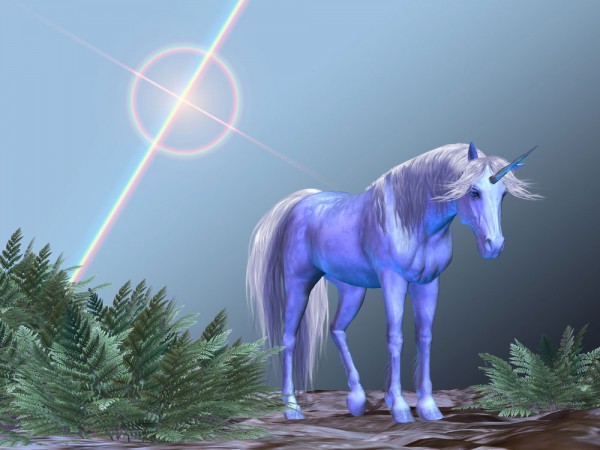 Image: "Unicorn Resting - A white unicorn rests under a bright star," by Catmando, for Shutterstock. |
| 7:14a | How consumers let down their guard on web privacy There's a piece in the NYT by Somini Sengupta on how we are increasingly turning over our data online "in exchange for a deal we can’t refuse." The story profiles Alessandro Acquisti, a behavioral economist at Carnegie Mellon University in Pittsburgh, who studies how online users make these choices. "In a series of provocative experiments, he has shown that despite how much we say we value our privacy — and we do, again and again — we tend to act inconsistently." [NYT] |
| 7:17a | Scientists not quite done ripping off Henrietta Lacks and family "History seems to have repeated itself. A group of scientists at the European Molecular Biology Laboratory in Heidelberg recently published a paper in which they sequenced the entire genome of a HeLa cell – essentially putting Henrietta Lacks's DNA sequence up on the internet for all to see. Amazingly, they failed to alert anyone in the Lacks family about their intentions or ask their permission." [Guardian] |
| 7:18a | How to write about Muslims "The Western press and social media often seem to exercise two options for dealing with the Muslim population of the world: overt, unabashed Islamophobia or slightly subtler Islamophobia," writes contributor Belen Fernandez at Al Jazeera English. She has some suggestions on how to avoid clichés and stereotypes. |
| 8:44a | Three's Company pilot with different actors The rather dreadful 1970s sitcom Three's Company adapted the UK sitcom Man About the House for American TV; it ran for eight seasons and was heavily syndicated through my whole childhood, and as with many people of my age, it lurks in my subconscious. It turns out there was an unaired pilot that used some of the same cast, but a different writing team and a somewhat smarter brand of comedy, and it's surfaced on YouTube. Here's Wikipedia's description of that pilot:
Three's Company - Rare First UNAIRED Pilot (Part 1) Three's Company - Rare Second UNAIRED Pilot (Part 2) (via Super Punch) |
| 11:36a | Unicorn farts: the smell of April Fool's day
|
| 11:53a | Cartoonist Ed Piskor interviewed Here's our own cartoonist Ed Piskor being interviewed at Columbus Museum of Art by Jared Gardner on March 24, 2013. It's great to hear him talk about his influences and interests in this hour long conversation.
|
| 11:59a | Great dad dies (also, he was a scientist) [Error: Irreparable invalid markup ('<a [...] lady-scientists">') in entry. Owner must fix manually. Raw contents below.] <p class='ljsyndicationlink'><a href='http://feedproxy.google.com/~r/boingboing/iBag/~3/-9N3nNIohuA/story01.htm'>http://feedproxy.google.com/~r/boingboing/iBag/~3/-9N3nNIohuA/story01.htm</a></p><p class='ljsyndicationlink'><a href='http://boingboing.net/?p=222495'>http://boingboing.net/?p=222495</a></p>Handsome Dad of the Year (a former brunette) took out the garbage without fail, did the family shopping, and is remembered fondly by his step-daughters/first-cousins-once-removed. <a href="http://www.lastwordonnothing.com/2013/04/01/guest-post-physicist-dies-made-great-chili/">Also, outside the home, he discovered something called "relativity"</a>. Jennie Dusheck has a great follow up to <a href="http://boingboing.net/2013/04/01/rocket-scientist-who-also-made.html" title="Rocket scientist who also made "a mean beef stroganoff" inspires debate on how to write about lady-scientists">a story that Xeni posted about earlier today.</a> <img width='1' height='1' src='http://rss.feedsportal.com/c/35208/f/653965/s/2a37d07c/mf.gif' border='0'/><div class='mf-viral'><table border='0'><tr><td valign='middle'><a href="http://share.feedsportal.com/viral/sendEmail.cfm?lang=en&title=Great+dad+dies+%28also%2C+he+was+a+scientist%29&link=http%3A%2F%2Fboingboing.net%2F2013%2F04%2F01%2F222495.html" target="_blank"><img src="http://res3.feedsportal.com/images/emailthis2.gif" border="0" /></a></td><td valign='middle'><a href="http://res.feedsportal.com/viral/bookmark.cfm?title=Great+dad+dies+%28also%2C+he+was+a+scientist%29&link=http%3A%2F%2Fboingboing.net%2F2013%2F04%2F01%2F222495.html" target="_blank"><img src="http://res3.feedsportal.com/images/bookmark.gif" border="0" /></a></td></tr></table></div><img src="http://feeds.feedburner.com/~r/boingboing/iBag/~4/-9N3nNIohuA" height="1" width="1"/> |
| 12:06p | And all the vaginas are well above average At Double X Science, Jenny Morber has an excellent piece about the wide range of diversity seen in human lady parts. "Are you normal? Yes. Are you average? No. Most likely," she writes. What follows is a fascinating tour of human biology, from the different lengths and colors of labia to the wide range of shapes exhibited by the inside of the vaginal canal, itself. Even better, all of this can change over the course of an individual woman's life, rendering "average" even more meaningless. |
| 12:27p | Project: Recycle old scientific equipment into new tools for public engagement When ocean scientist Andrew Thaler found an old, outdated water level gauge, he found a way to give it new life — turning it into a tool to measure public interest in sea level rise. Instead of tracking water, the Sea Leveler tracks how much people are talking about water on Twitter. |
| 12:53p | In which Charles Darwin gets trolled From Darwin's diary written aboard the HMS Beagle, an accounting of an epic April Fool's prank of 1832. Knowing what I know about 19th-century sailors, this seems like a good way to get beaten up. |
| 1:01p | Indoor/Outdoor Humidex Thermometer
Setting it up is a snap. First insert two AA batteries into the back of the monitor and two more into the remote outside sensor. Press the reset button on both and you should begin receiving data which is displayed on the monitor. Look for a suitable place to locate the sensor. A shady area is recommended for accurate readings. The maximum transmission range is 45 meters but that is in open spaces. Walls will cut down on the separation distance. A signal detector icon indicates how strong the connection is between the two devices. Using this will help you find the best place to put each of the two gadgets. The remote sensor is splash proof but it should not be exposed to heavy rain. I have put mine under the eaves of my garage. The monitor can be mounted on a wall or placed on any flat surface. This particular model is perfectly suited for cold Canadian weather. The remote temperature sensor is good for -50°C to 70°C (-58°F to 158°F). The main difference between this monitor and the competition is that this model provides decimal temperature readings, which is a rarity. A temperature of 16.6°C to 17.4°C would register as 17°C on most monitors. I appreciate this precision because I am sure I can tell the difference between these two readings. On the monitor there is a battery indicator icon, letting you know when the power is starting to go. The batteries should last about 12 months. Besides the indoor/outdoor temperatures, the monitor also displays the outside humidity and a “Humidex” index to indicate how comfortable/uncomfortable the temperature really is outside. -- Marcel Dufresne Thermor Bios Indoor/Outdoor Humidex Thermometer $32 |
| 1:02p | March community-building-and-tribal-unity/Madness At the Wall Street Journal, Eric Simmons writes about the psychology of March Madness, which is really the psychology of relationships and the deep emotional bonds underlying communities and tribes. When you cheer on the Wichita State Shockers in the Final Four, what you're really doing is introducing other people (and other groups) into your definition of self. |
| 1:06p | Dear Evolution, get bent Imaginary letters, in which giraffes, angora rabbits, and emperor penguins air their grievances against the forces of natural selection. |
| 1:33p | Bloodshoot: fun thriller comic book written by Duane Swierczynski
Bloodshot is the code name of a man who has billions of self-repairing/self-replicating nanoscale robots inhabiting his body. Bloodshot is part of a secret government defense project. The nanobots coursing through his system give him enormous strength and the ability to survive being shot, stabbed, or bombed, because they detect and repair damage. All they ask in return is that their host eats plenty of protein to keep them fueled. (That means cattle that happen to be grazing in a field should be afraid when Bloodshot is near.) In issues one through four (which make up this anthology) Bloodshot struggles to figure out his true identity. That's because the government scientists who designed Bloodshot have implanted in his brain a bunch of different identities, each with fabricated memories of wife and children, which the scientists can switch on like a TV channel to persuade Bloodshot to participate on a mission. In these issues of the comic, Bloodshot's already bizarre life gets even stranger. For one thing, the nanobots in his body had become intelligent and are communicating with him in the form of gold-colored apparitions of his imaginary wife and kids. For another thing, the scientist who created Bloodshot has gone rogue and is trying to use Bloodshot against his former colleagues. With shades of Greg Bear's Blood Music and Philip K Dick's novels, I had a blast reading Bloodshot and I'm eager to read volume 2, which comes out in July. (I should also mention that the art, by Manuel Garcia and Arturo Lozzi is excellent.) |
| 5:10p | Volcano Dust -- bhut jolokia (ghost chili) powder
|
| << Previous Day |
2013/04/01 [Calendar] |
Next Day >> |

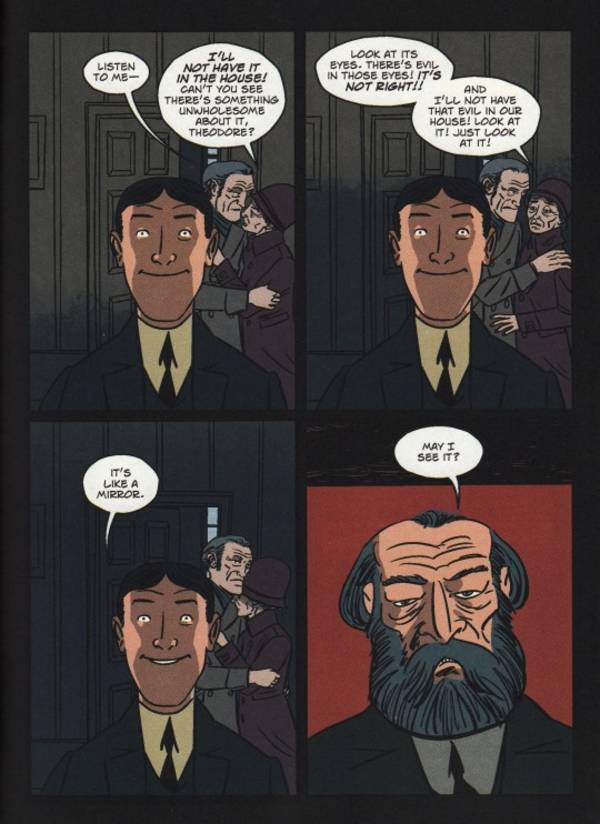
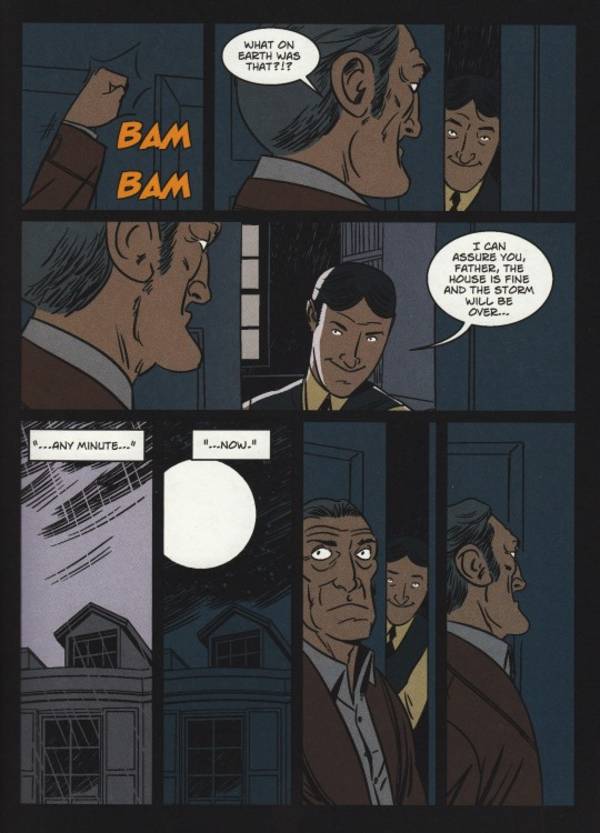


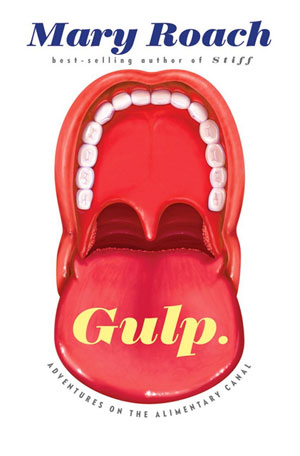 Mary Roach's Gulp: Adventures on the Alimentary Canal is available from Amazon.
Mary Roach's Gulp: Adventures on the Alimentary Canal is available from Amazon.
 Here at Toy Joy, April Fools Day smells like Unicorns! Specifically, Unicorn Farts! Not only is April 1 celebrated globally as a holiday of mischief, it also happens to be the best day for harvesting the rarest of poots: Unicorn Farts! Currently offered both in store at Toy Joy and at ToyJoy.com for the low price of $2.95, this enchanted product is sure to bring a smile to your prince or princess.
Here at Toy Joy, April Fools Day smells like Unicorns! Specifically, Unicorn Farts! Not only is April 1 celebrated globally as a holiday of mischief, it also happens to be the best day for harvesting the rarest of poots: Unicorn Farts! Currently offered both in store at Toy Joy and at ToyJoy.com for the low price of $2.95, this enchanted product is sure to bring a smile to your prince or princess. 



